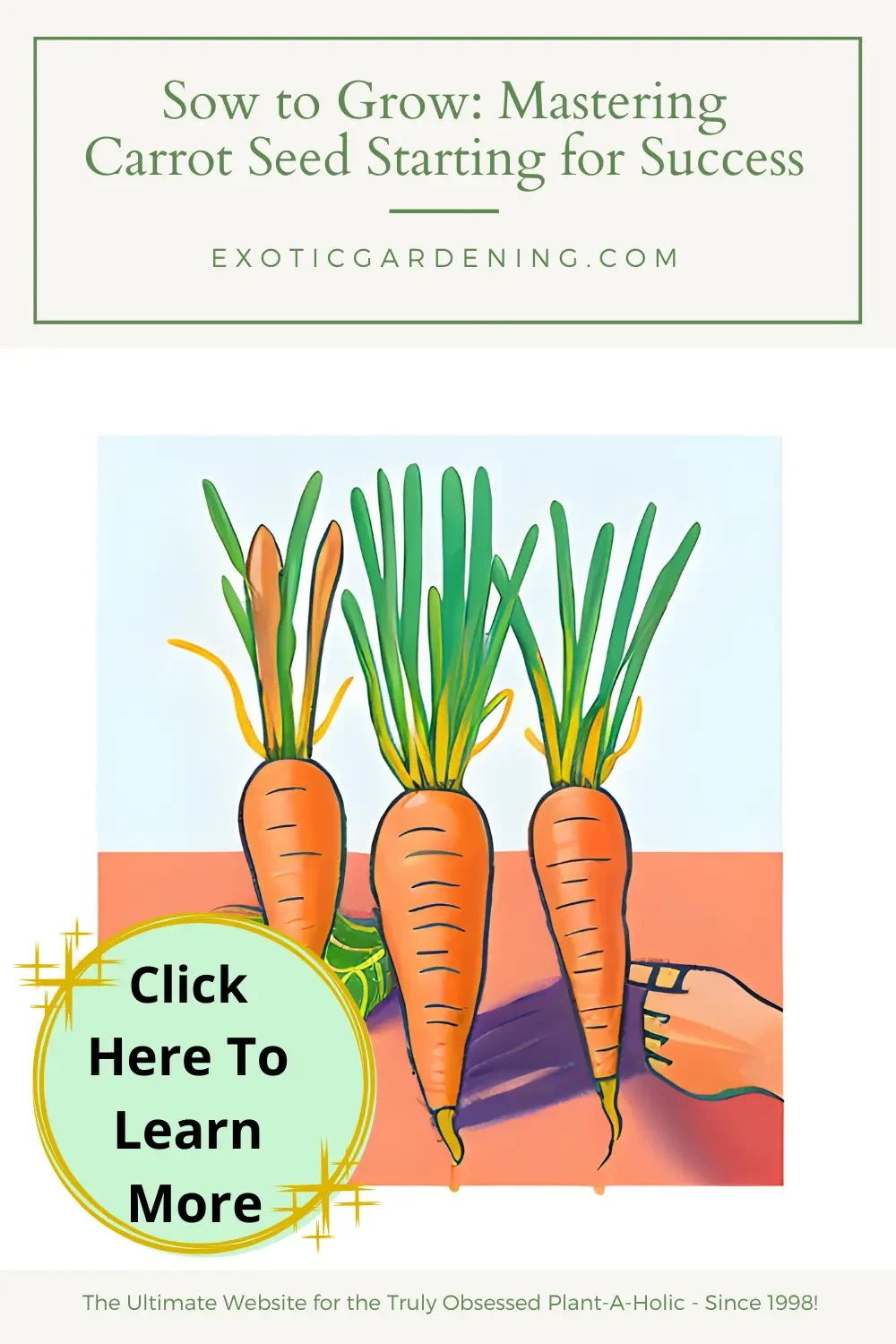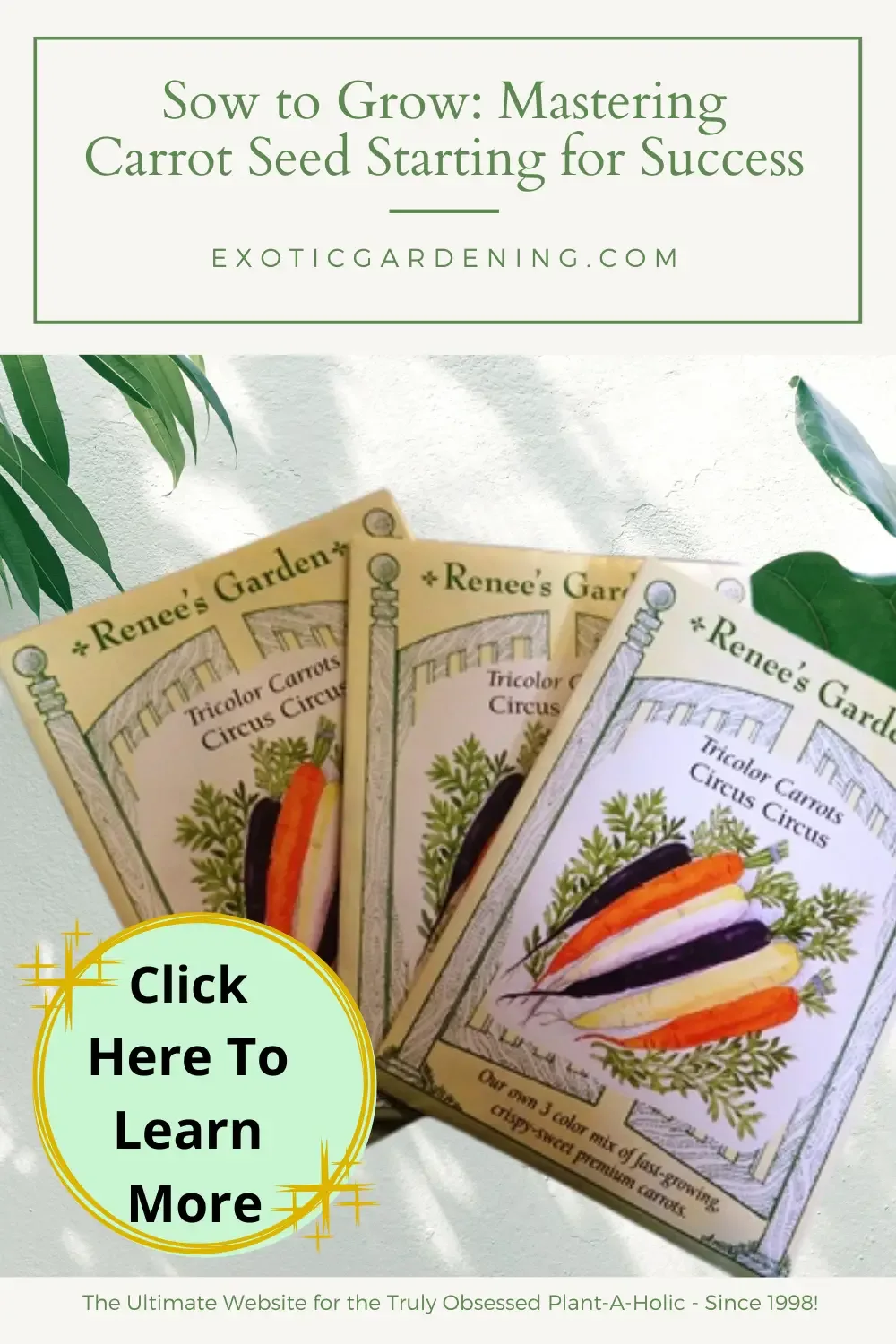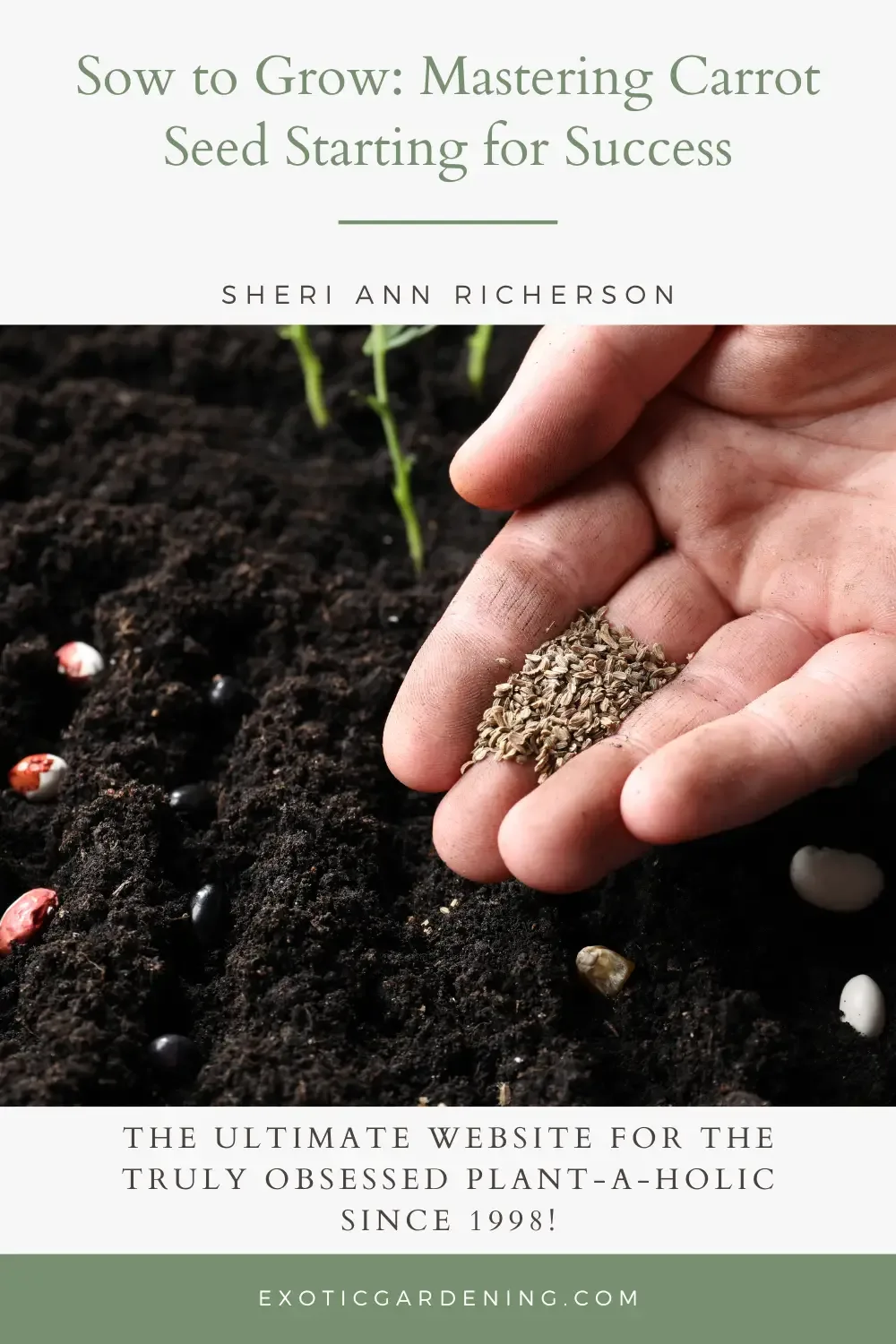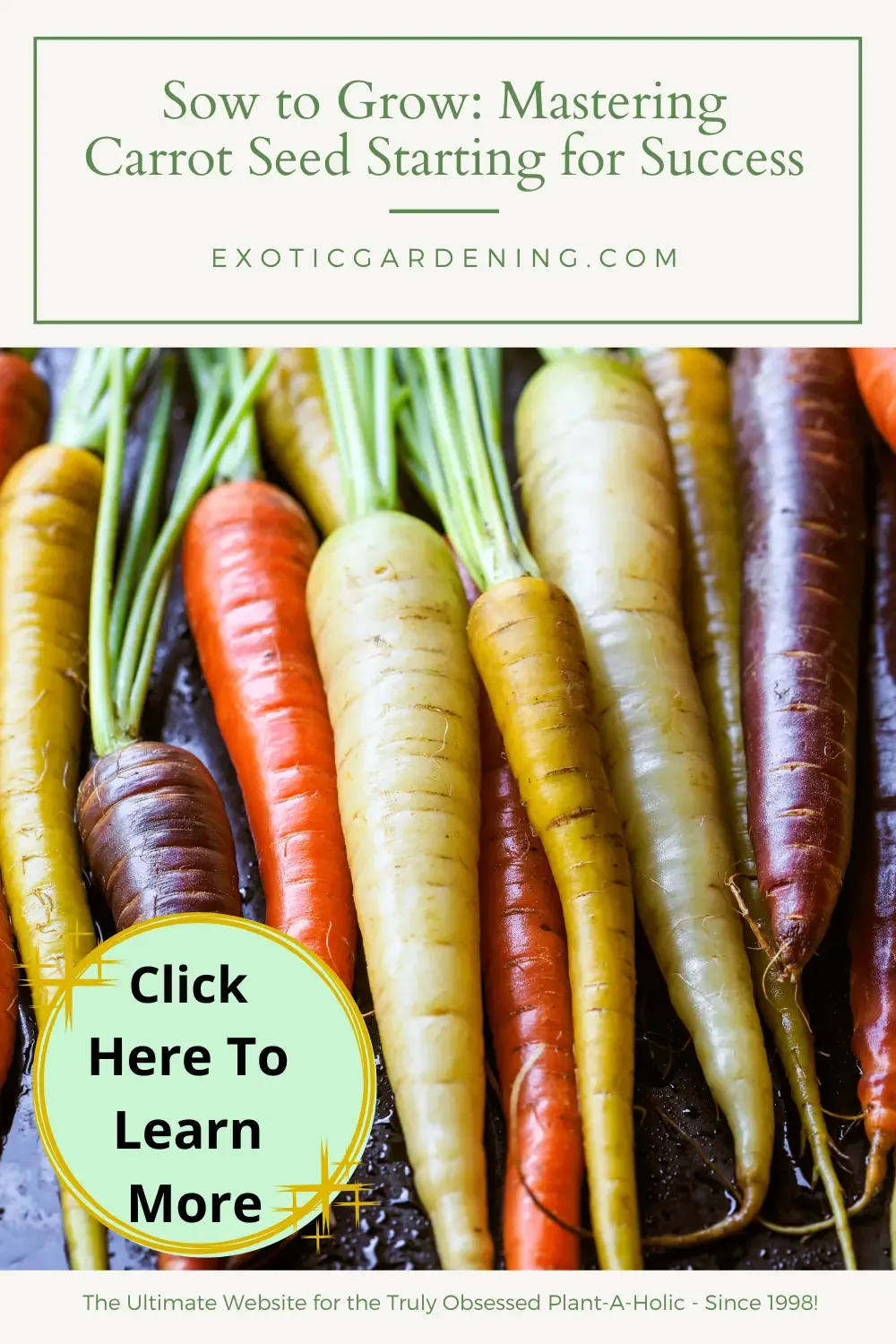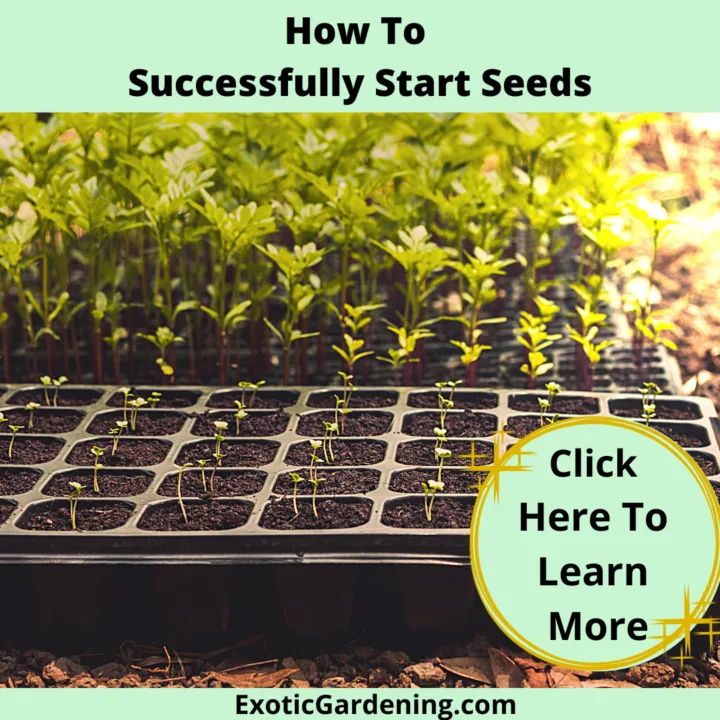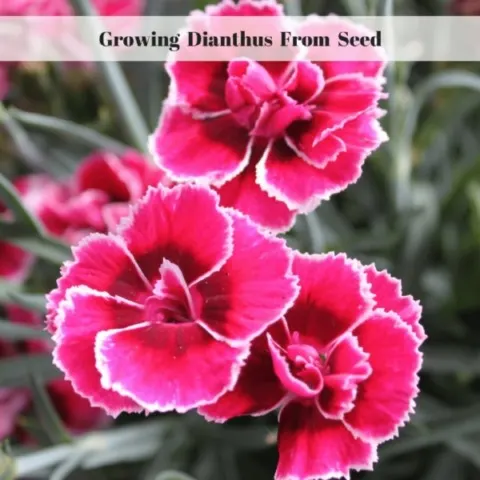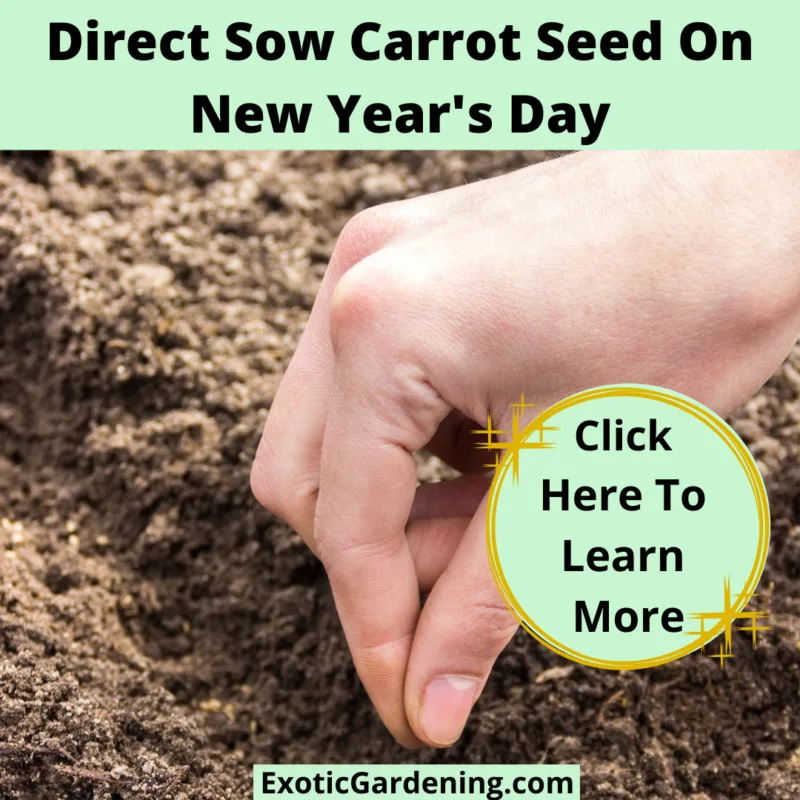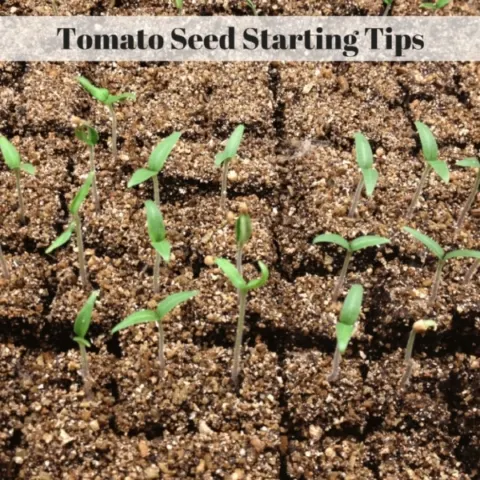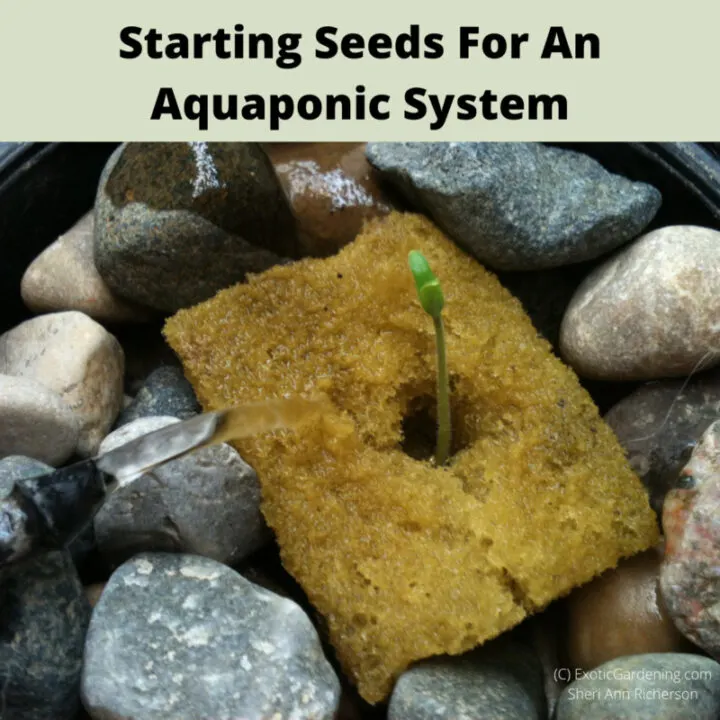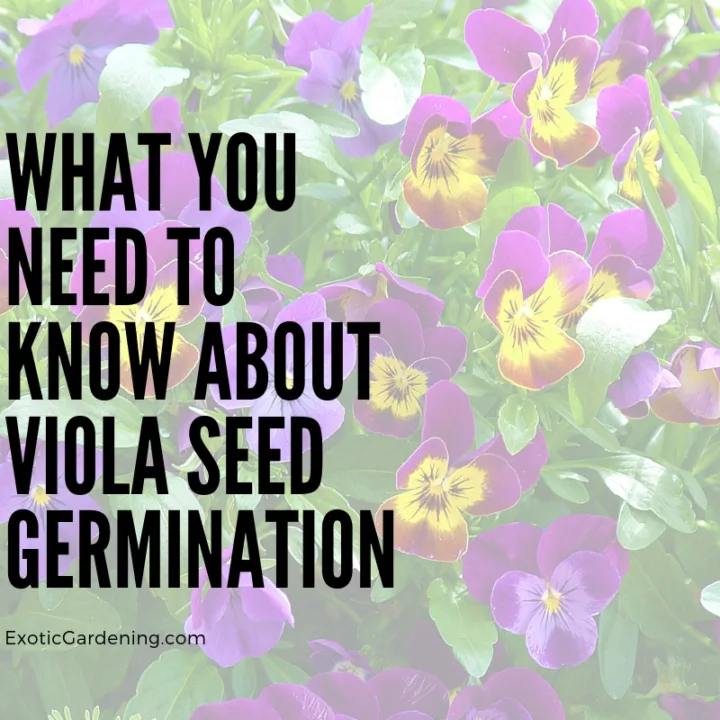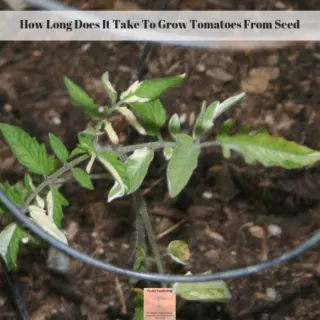Gardening isn't just a hobby for me; it's a way of life, just like carrot seed starting.
Nestled in the heart of Indiana, where the USDA Hardiness Zones 5 and 6 dictate the rhythm of our seasons,
I have honed my skills in growing plants from seed.
Regardless of the weather outside, my garden thrives year-round, both indoors and outdoors.
One tradition that marks the start of every gardening year is sowing carrot seeds, a process that begins as early as January 1.
In this detailed guide, we will embark on a journey through the intricate art of cultivating carrots from seeds.
The nuances of successfully nurturing these vibrant roots, along with an exploration of diverse carrot varieties, will be our focus.
By the time you finish reading, you'll be equipped not only with a wealth of knowledge but also the confidence to grow your own flourishing carrot garden.
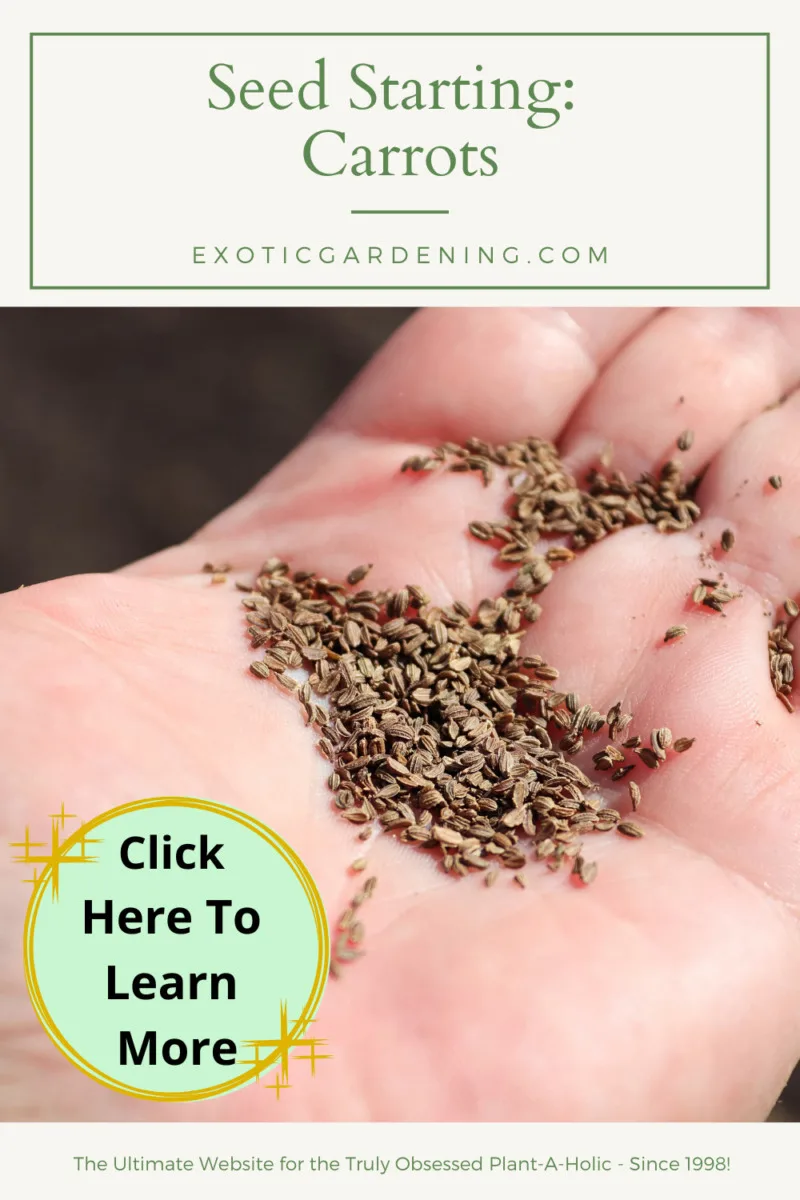
Why Carrots Matter
Carrots are more than just a vegetable; they are a symbol of patience and dedication.
The journey from a minuscule seed to a nutritious and versatile root vegetable is a testament to the resilience of both the gardener and the natural world.
This guide doesn't just cover how to grow carrots; it encapsulates the profound experience of nurturing life from the ground up.
Starting Carrots from Seed: The Essentials
- Germinating Tiny Seeds: The challenge of carrot seeds' diminutive size is one gardeners are all too familiar with. Unlike many seeds that are buried under soil, carrot seeds simply need a gentle press into well-prepared soil. For optimal results, the soil temperature should hover between 55 to 75 degrees Fahrenheit, providing the perfect environment for germination.
- Mastering Planting Techniques: Traditionally, rows were the norm, but I've found success with patch planting. This involves demarcating a defined area, loosening the soil, and evenly dispersing the seeds. A light press with your feet and thorough watering are crucial to set the stage for growth.
- Preventing Cross-Pollination: To maintain seed purity, prevent different carrot varieties from flowering simultaneously. Strategies such as row covers or controlled hand-pollination play a pivotal role in ensuring successful growth.
- Managing Cross-Pollination Risks: Vigilance is necessary to prevent accidental cross-pollination with wild Queen Anne's Lace, a close relative of the carrot. Shield carrot flowers with row covers or bags during the blooming season to avoid unwanted hybridization.
- The Art of Seed Preservation: The information on seed packages is an invaluable resource that guides you through the entire lifecycle of a plant. These packages are also great for storing saved seeds. Despite potential decreases in germination rates, older seeds can still yield viable crops.
Starting Carrot Seeds for Winter Growth and Overwintering
For those seeking a year-round carrot harvest, the winter season offers a unique opportunity.
Consider starting carrot seeds indoors during the late summer or early fall, aiming for a winter crop.
These early plantings can be transplanted to a protected garden bed or greenhouse to extend the growing season.
Additionally, an innovative technique involves sowing carrot seeds directly in the garden just before the ground freezes in late fall.
These seeds lay dormant throughout the winter months, protected by the cold temperatures.
As spring arrives, these seeds will naturally germinate, giving you an early start on your carrot harvest.
This method, known as overwintering, capitalizes on nature's rhythms to ensure a robust crop of vibrant carrots as the weather warms.
Mastering Carrot Seed Set Formation
Carrot seed set formation is an art that requires patience and skill. To ensure your carrot plants set seeds effectively, follow these steps:
- Preparing for Fall: As autumn arrives, either mulch carrots heavily or cut back their foliage to an inch. Store the carrots in moist sand in a root cellar, preparing them for the winter months.
- The Spring Return: As spring unfurls, reintroduce the stored carrots into the garden, marking the beginning of a new growth cycle.
- Flower Stalk Development: Early summer sees the emergence of flower stalks from the carrot plants, signifying the next stage of their life cycle.
- Maturing Seed Heads: Allow two sets of flower heads to mature, then cover them with pantyhose. As these seed heads turn brown on the plant, it's a sign that they're ready for harvesting.
- Harvesting the Seeds: When you notice seeds falling into the pantyhose, it's time to harvest. Properly stored carrot seeds can remain viable for up to three years.
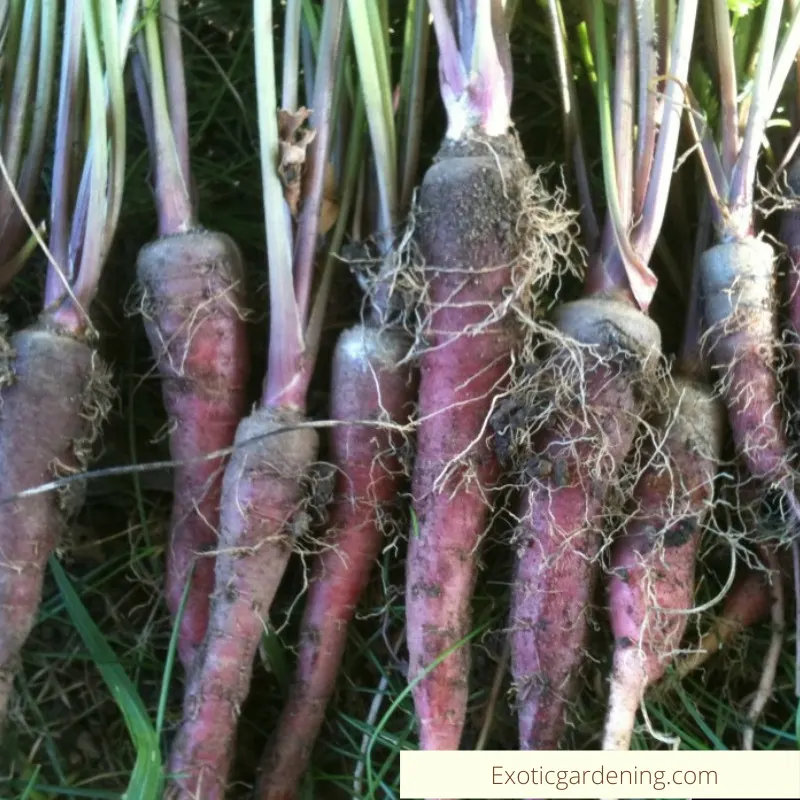
Varieties of Carrots and Their Unique Traits
Here are the varieties of carrots I am growing this year and a little bit of information about each variety.
Cosmic Purple:
Carrot Cosmic Purple has deep purple skin with an orange-red flesh. It is one of my favorites.
The carrots grow 6 to 7 inches long.
The optimal soil temperature for germination is 55 to 75 degrees F. So, what's the point of planting on January 1?
Because when the soil warms up, the seeds are already planted and begin to germinate.
It's a real time saver - and the carrots perform so much better when they are allowed to germinate at just the right time, plus I get an earlier harvest!
This particular variety germinates in 6 to 21 days.
Just because you don't see anything, doesn't mean the seeds didn't germinate.
It can take up to three weeks before you see tiny green carrot foliage!
You can plant the seeds a half inch apart at first, but thin them once they begin to grow so they are one to two inches apart.
This gives the carrots room to grow. It takes 80 days for this variety to reach maturity.
Dragon:
Dragon is another purple carrot.
I really do like the purple varieties better than any other color of carrot.
I think they taste better and I love the color.
This particular variety is exceptionally high in antho-cyanins and other antioxidants.
This variety has longer roots and needs a seed bed depth of 12 to 16 inches to allow plenty of room for growth.
It also prefers the soil to be a bit warmer for germination.
The ideal temperature range is between 60 and 70 degrees F.
This particular variety germinates in 6 to 21 days.
The preferred plant spacing is one-and-a-half inches.
It takes 75 days for this variety to reach maturity.
Tricolor Circus Circus Carrots:
I love Renee's Garden.
She has some of the coolest seeds around and these Tricolor Circus Circus Carrot Seeds are no exception.
The colors in the packet include bright orange (Mokum F1), creamy white (White Satin F1) and of course, purple (Purple Rain F1).
The average length of these varieties are 8 inches.
The seed packet does not give the optimal soil temperature for these varieties.
These particular varieties germinate in 10 to 20 days.
Renee suggests harvesting the smaller carrots once they being to orange up.
Thin the carrots at this time so they are about two inches apart.
It takes 70 days for these varieties to reach maturity.
Kaleidoscope Mix:
Yes, this is another colorful carrot mix from The Cook's Garden.
It contains the following varieties: Cosmic Purple, Atomic Red, Solar Yellow and Solar Orange.
The seed packet contains no information other than to harvest them once the top of the carrot root reaches ¾ to one-and-one-half inch in diameter.
It also suggests thinning the carrots so they are three inches apart once the carrot foliage is an inch tall.
Scarlet Nantes:
The Scarlet Nantes Carrot Seeds packet contained no information, so when this happens, I typically grow them just like all the other carrots.
Chantenay:
The Chantenay Red Cored Carrot Seeds packet did not contain any information either.
The other seed packet, I cut up to put in with the seeds so it was unreadable.
I really hate it when seed companies do this.
I can take the time to look the information up, but to someone with limited internet access and limited gardening ability, it makes it really hard.
Nantes Coreless:
The Carrot Nantes seeds come in a planting strip making it best to lightly cover them with ⅛ to ¼ inch of soil.
Planting strips make it easy to plant, but any part exposed to the sunlight drys out quickly which can cause problems.
Be sure - if you use these - to lightly cover all parts of that strip.
The roots of this variety grow six to seven inches long and it is an ideal variety for canning or storage.
This particular variety germinates in 8 to 12 days.
Thin plants to 3 inches apart.
It takes 70 days for this variety to reach maturity.
Babette:
The Babette French baby carrot variety has a deep orange flesh.
These mini-carrots reach a mature size of just three to four inches long, however if they are left in the garden, they will continue to lengthen.
This would be a good variety to try in containers.
This particular variety germinates in 10 to 20 days.
Renee suggests harvesting the smaller carrots once they being to orange up.
Thin the carrots at this time so they are about two inches apart.
It takes 70 days for this variety to reach maturity.
Romeo:
These ball-shaped, orange-fleshed Round Baby Romeo carrots are very fast growing and ready to harvest when they are an inch to an inch-and-a-half in diameter.
That makes them perfect for container gardening.
This particular variety germinates in 10 to 20 days.
Thin the carrots so they are about three inches apart. It takes 60 days for this variety to reach maturity.
Danvers Half Long:
The Danvers Half Long is a very uniform, heavy cropping carrot ideal for freezing.
The roots grow seven to seven-and-a-half inches long.
This particular variety germinates in 7 to 14 days.
It takes 70 days for this variety to reach maturity.
Zanahoria:
This is a very productive variety ideal for storage or canning.
It has strong tops that make harvesting easy.
The roots grow to eight inches.
This particular variety germinates in 8 to 12 days.
Thin the carrots so they are about 15 inches apart. It takes 75 days for this variety to reach maturity.
Danvers #126:
The 'Danvers 126' variety is a good keeper.
It has strong tops making harvesting easy and eight-inch roots.
It is very productive and high in Vitamin A.
This particular variety germinates in 8 to 12 days.
Thin the carrots so they are about 15 inches apart.
It takes 75 days for this variety to reach maturity.
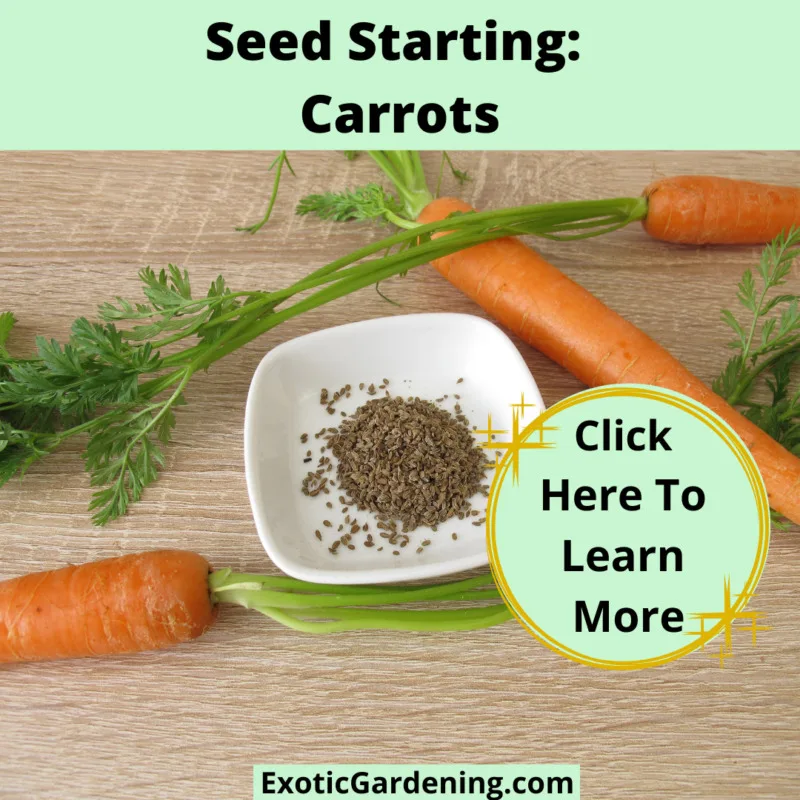
Expanding Your Knowledge
For those who wish to dive deeper into the world of seed saving and starting, my book, "The Complete Idiot's Guide To Seed Saving & Starting," offers an expansive resource.
This guide delves into the intricacies of nurturing plants from seed to harvest, providing both novice and experienced gardeners with valuable insights, tips, and techniques to enhance their gardening journey.
FAQs: Your Carrot Growing Queries Answered
Q: When is the ideal time to sow carrot seeds?
A: Carrot seeds can be sown as early as January 1, capitalizing on warming soil conditions. This strategic timing allows for optimal germination.
Q: What is patch planting, and why is it effective for carrots?
A; Patch planting involves creating defined areas for planting rather than traditional rows. This approach maximizes seed distribution, enhances germination, and simplifies thinning.
Q: How can I prevent cross-pollination between carrot varieties?
A: Cross-pollination can be avoided by using row covers, hand-pollination, or planting varieties with staggered flowering times.
Q: What risks does cross-pollination with Queen Anne's Lace pose?
A: Cross-pollination with Queen Anne's Lace can result in undesirable hybridization. Prevent this by covering carrot flowers during the blooming season.
Q: What are the benefits of growing purple carrot varieties?
A: Purple carrot varieties, like Cosmic Purple and Dragon, boast higher levels of antioxidants, making them not only visually appealing but also nutritionally rich.
Q: Can I grow carrots in containers?
A: Yes, certain varieties like Romeo and Babette are well-suited for container gardening due to their smaller sizes and growth habits.
Q: How do I ensure successful seed set formation for carrots?
A: Successful seed set formation involves overwintering stored carrots and reintroducing them in spring. Flower stalks will emerge, followed by mature seed heads that can be harvested once they turn brown.
How do I successfully preserve carrot seeds for future use?
Successfully preserving carrot seeds for future use involves a combination of proper harvesting, drying, and storage techniques.
Here's a step-by-step guide to ensure the longevity and viability of your carrot seeds:
- Choose the Right Carrot Plant: Select healthy and robust carrot plants that exhibit the desired traits. Avoid plants with signs of disease or poor growth.
- Allow Seeds to Mature: To obtain viable seeds, allow the carrot plants to fully mature. This means letting the carrots remain in the ground beyond the typical harvest time, until they bolt and produce flowers.
- Monitor Seed Heads: Watch for the development of seed heads, which are clusters of flowers that eventually turn into seeds. Allow these seed heads to mature fully on the plant.
- Harvesting Seeds: Once the seed heads have turned brown and dry on the plant, it's time to harvest the seeds. Gently shake the seed heads to release the seeds. Alternatively, you can cut the seed heads and place them in a paper bag to capture any seeds that fall during the process. If you are worried about the seeds falling off the plant before you have a chance to harvest them, cover the immature, developing seed heads with pantyhose securely tied to the stem of the plant, but be careful not to damage the stem of the plant when doing this.
- Drying the Seeds: After harvesting, spread the seeds on a clean and dry surface. Allow them to air-dry for a few days in a well-ventilated area. Make sure the seeds are completely dry before proceeding to the next step.
- Removing Chaff: After drying, gently rub the seed heads between your hands to loosen the seeds from the chaff (dry plant material). You can use a fine sieve or mesh screen to separate the seeds from the chaff.
- Labeling and Packaging: Ensure you label the seeds with the carrot variety and the year of collection. Place the cleaned seeds in a small paper envelope, seed packet, or airtight container. Proper labeling prevents confusion and helps you keep track of seed varieties.
- Choose the Right Storage Container: Select a container that is airtight and moisture-resistant. Small glass jars, plastic containers with tight-fitting lids, or resealable plastic bags work well. Make sure the container is clean and dry before adding the seeds.
- Add a Desiccant: To further prevent moisture buildup, consider adding a desiccant, such as a silica gel packet, to the container. This helps maintain a low humidity environment.
- Store in a Cool, Dry Place: Store the seed containers in a cool, dry, and dark place. A temperature of around 32 to 41 degrees Fahrenheit (0 to 5 degrees Celsius) is ideal. Avoid areas with temperature fluctuations, as well as locations that are exposed to direct sunlight or high humidity.
- Regularly Check for Viability: Periodically perform germination tests by planting a few seeds in a controlled environment. This will help you assess the seed's viability and determine if they are still suitable for planting.
By following these steps, you can ensure that your carrot seeds remain viable and ready for successful germination in the seasons to come.
Properly stored carrot seeds can last for several years, providing you with a continuous supply of homegrown carrots.
Embark on Your Carrot-Growing Journey
Carrot cultivation encapsulates the delicate balance between human care and the natural world's rhythms.
By adopting the techniques shared in this guide, you're equipped to embark on your own carrot-growing journey.
As you experiment with various carrot varieties and methods, you'll uncover the magic of watching life sprout from a seed, ultimately reaping a bountiful harvest that connects you to the Earth's abundance.
Remember, every carrot tells a story of patience, dedication, and the marvel of nature's growth.
Growing Plants From Seed
How To Successfully Start Seeds
Learn how to successfully start seeds indoors or out. Learn about light requirements, seed sowing depth, how to prevent damping off and more.
Growing Dianthus From Seed
Learn all about growing dianthus from seed and about some of the varieties available. Also learn how to save seeds from dianthus flowers.
Botanical Interests Continues Commitment To Being GMO-Free
I love Botanical Interests not only for their high quality seeds, but for their commitment to being GMO-free.

